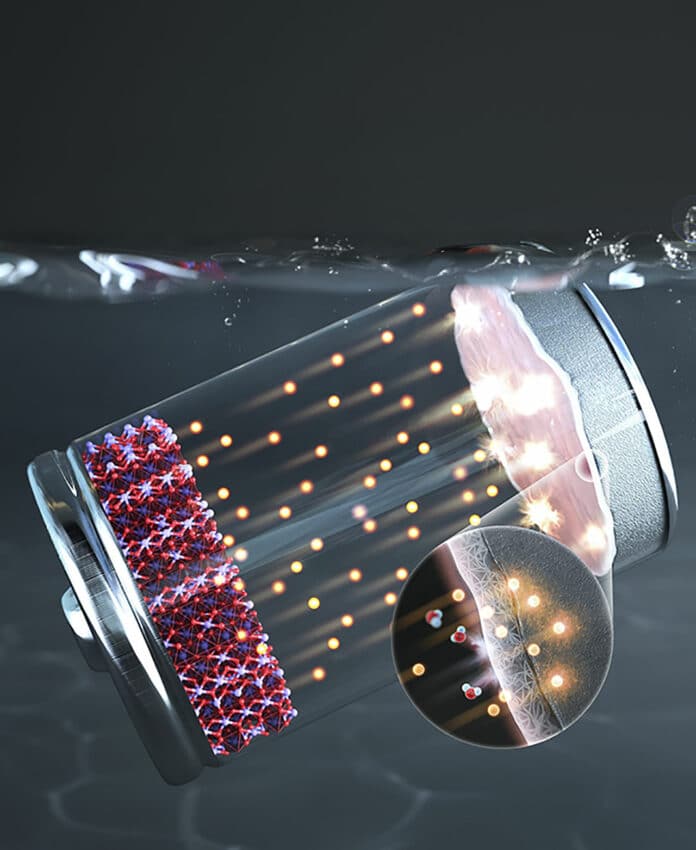Aqueous rechargeable batteries based on Zinc anodes are among the most promising systems to replace conventional lithium-ion batteries thanks to their intrinsic safety, nontoxicity, cost-effectiveness, and outstanding power output.
A research team at Pohang University of Science and Technology (POSTECH) has developed a stable aqueous zinc-ion battery that uses water as an electrolyte. They employed a protective polymer layer to prevent electrode corrosion and increase the stability of the zinc anode, improving the electrochemical stability of the aqueous zinc-ion battery.
Lightweight, high-capacity lithium-ion batteries are widely used in mobile phones, laptops, and other necessities in today’s world. However, electrolytes used in conventional lithium-ion batteries are inherently flammable, leading to fatal fires or explosions. Such an accident can cause direct damage to the users.
To address this issue, non-flammable, aqueous electrolyte batteries are being developed as promising replacements. However, the inferior reversibility of the zinc anode in aqueous electrolytes, resulting from zinc dendrites and surface side reactions, limits the practical realization of zinc-ion batteries.
The POSTECH research team developed a zinc anode coated with a multifunctional protective layer by using a block copolymer to enhance the reversibility of zinc-ion batteries. The new polymer layer is elastic and stretchable, enduring volume expansion during battery charging and discharging.
The polymer protective layer is found to induce homogenized ion distribution and suppress dendritic growth, contributing to a long-term zinc anode lifespan. The thin film layer also improves the electrode stability by suppressing unnecessary chemical/electrochemical reactions in the electrolyte on the electrode surface.
In lab experiments, the coated zinc anode shows excellent stability with a long-term symmetric cell lifespan and maintains capacity retention of 80% after 2,500 cycles, paired with a manganese oxide cathode. In addition, the researchers revealed the movement of zinc ions in the coating layer by using time-of-flight secondary ion mass spectrometry (TOF-SIMS) analysis.
This study provides a facile fabrication process and accessible analysis methods to rationalize the development of high-performance zinc-ion batteries.
Journal reference:
- Sangyeop Lee, Gyujin Song, Sungho Kim, Dong-Yeob Han, Jae Hyun Park, Sungjin Cho, Hye Bin Son, Gahyun Kim, Seok Ju Kang, and Soojin Park. Ion-selective and chemical-protective elastic block copolymer interphase for durable zinc metal anode. Cell Reports Physical Science, 2022; DOI: 10.1016/j.xcrp.2022.101070
